Tim Rocktaschel
Programming by Backprop: LLMs Acquire Reusable Algorithmic Abstractions During Code Training
Jun 23, 2025Abstract:Training large language models (LLMs) on source code significantly enhances their general-purpose reasoning abilities, but the mechanisms underlying this generalisation are poorly understood. In this paper, we propose Programming by Backprop (PBB) as a potential driver of this effect - teaching a model to evaluate a program for inputs by training on its source code alone, without ever seeing I/O examples. To explore this idea, we finetune LLMs on two sets of programs representing simple maths problems and algorithms: one with source code and I/O examples (w/ IO), the other with source code only (w/o IO). We find evidence that LLMs have some ability to evaluate w/o IO programs for inputs in a range of experimental settings, and make several observations. Firstly, PBB works significantly better when programs are provided as code rather than semantically equivalent language descriptions. Secondly, LLMs can produce outputs for w/o IO programs directly, by implicitly evaluating the program within the forward pass, and more reliably when stepping through the program in-context via chain-of-thought. We further show that PBB leads to more robust evaluation of programs across inputs than training on I/O pairs drawn from a distribution that mirrors naturally occurring data. Our findings suggest a mechanism for enhanced reasoning through code training: it allows LLMs to internalise reusable algorithmic abstractions. Significant scope remains for future work to enable LLMs to more effectively learn from symbolic procedures, and progress in this direction opens other avenues like model alignment by training on formal constitutional principles.
Open-Endedness is Essential for Artificial Superhuman Intelligence
Jun 06, 2024


Abstract:In recent years there has been a tremendous surge in the general capabilities of AI systems, mainly fuelled by training foundation models on internetscale data. Nevertheless, the creation of openended, ever self-improving AI remains elusive. In this position paper, we argue that the ingredients are now in place to achieve openendedness in AI systems with respect to a human observer. Furthermore, we claim that such open-endedness is an essential property of any artificial superhuman intelligence (ASI). We begin by providing a concrete formal definition of open-endedness through the lens of novelty and learnability. We then illustrate a path towards ASI via open-ended systems built on top of foundation models, capable of making novel, humanrelevant discoveries. We conclude by examining the safety implications of generally-capable openended AI. We expect that open-ended foundation models will prove to be an increasingly fertile and safety-critical area of research in the near future.
JaxMARL: Multi-Agent RL Environments in JAX
Nov 20, 2023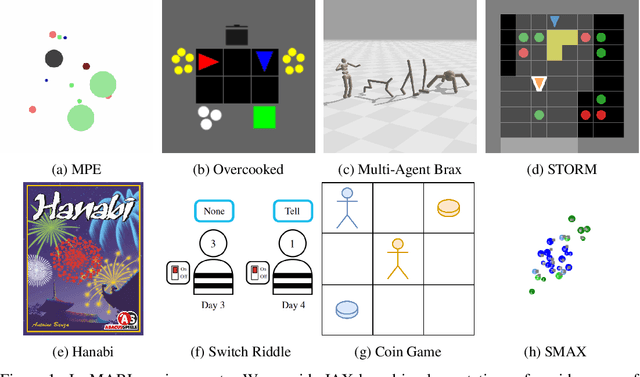

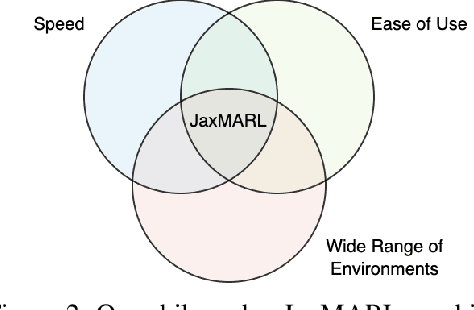

Abstract:Benchmarks play an important role in the development of machine learning algorithms. For example, research in reinforcement learning (RL) has been heavily influenced by available environments and benchmarks. However, RL environments are traditionally run on the CPU, limiting their scalability with typical academic compute. Recent advancements in JAX have enabled the wider use of hardware acceleration to overcome these computational hurdles, enabling massively parallel RL training pipelines and environments. This is particularly useful for multi-agent reinforcement learning (MARL) research. First of all, multiple agents must be considered at each environment step, adding computational burden, and secondly, the sample complexity is increased due to non-stationarity, decentralised partial observability, or other MARL challenges. In this paper, we present JaxMARL, the first open-source code base that combines ease-of-use with GPU enabled efficiency, and supports a large number of commonly used MARL environments as well as popular baseline algorithms. When considering wall clock time, our experiments show that per-run our JAX-based training pipeline is up to 12500x faster than existing approaches. This enables efficient and thorough evaluations, with the potential to alleviate the evaluation crisis of the field. We also introduce and benchmark SMAX, a vectorised, simplified version of the popular StarCraft Multi-Agent Challenge, which removes the need to run the StarCraft II game engine. This not only enables GPU acceleration, but also provides a more flexible MARL environment, unlocking the potential for self-play, meta-learning, and other future applications in MARL. We provide code at https://github.com/flairox/jaxmarl.
Grid-to-Graph: Flexible Spatial Relational Inductive Biases for Reinforcement Learning
Feb 08, 2021

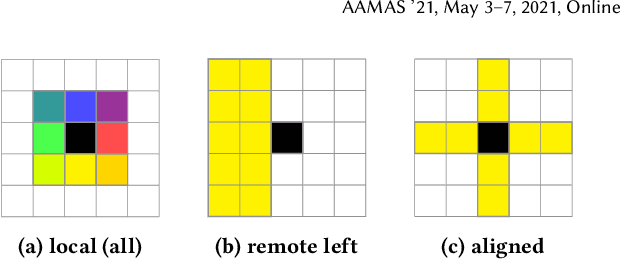
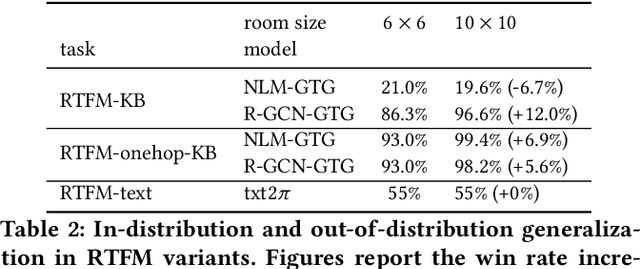
Abstract:Although reinforcement learning has been successfully applied in many domains in recent years, we still lack agents that can systematically generalize. While relational inductive biases that fit a task can improve generalization of RL agents, these biases are commonly hard-coded directly in the agent's neural architecture. In this work, we show that we can incorporate relational inductive biases, encoded in the form of relational graphs, into agents. Based on this insight, we propose Grid-to-Graph (GTG), a mapping from grid structures to relational graphs that carry useful spatial relational inductive biases when processed through a Relational Graph Convolution Network (R-GCN). We show that, with GTG, R-GCNs generalize better both in terms of in-distribution and out-of-distribution compared to baselines based on Convolutional Neural Networks and Neural Logic Machines on challenging procedurally generated environments and MinAtar. Furthermore, we show that GTG produces agents that can jointly reason over observations and environment dynamics encoded in knowledge bases.
Generating Interactive Worlds with Text
Dec 04, 2019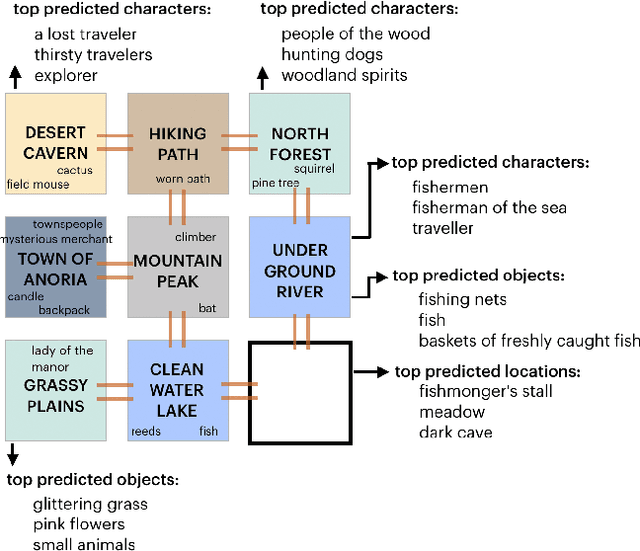
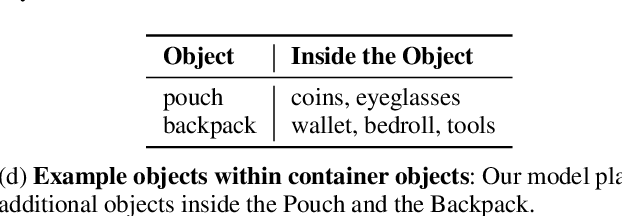
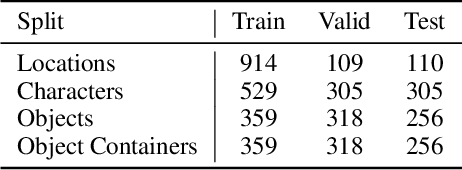
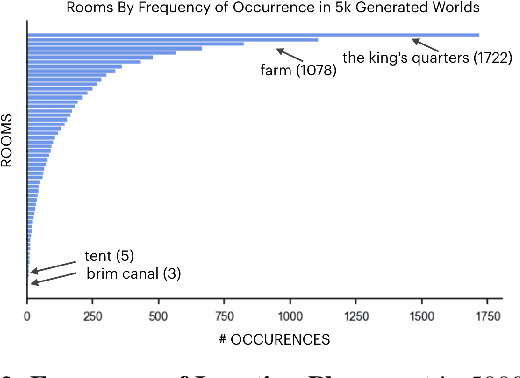
Abstract:Procedurally generating cohesive and interesting game environments is challenging and time-consuming. In order for the relationships between the game elements to be natural, common-sense has to be encoded into arrangement of the elements. In this work, we investigate a machine learning approach for world creation using content from the multi-player text adventure game environment LIGHT. We introduce neural network based models to compositionally arrange locations, characters, and objects into a coherent whole. In addition to creating worlds based on existing elements, our models can generate new game content. Humans can also leverage our models to interactively aid in worldbuilding. We show that the game environments created with our approach are cohesive, diverse, and preferred by human evaluators compared to other machine learning based world construction algorithms.
Neural Variational Inference For Estimating Uncertainty in Knowledge Graph Embeddings
Jun 12, 2019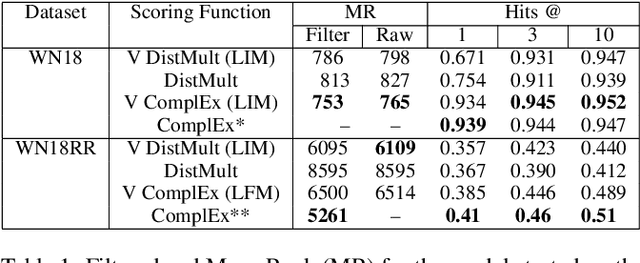
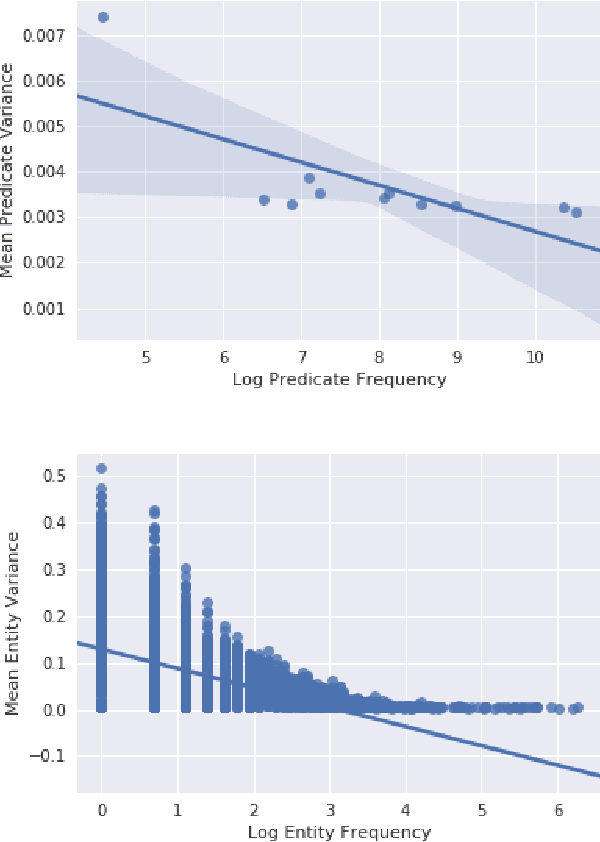

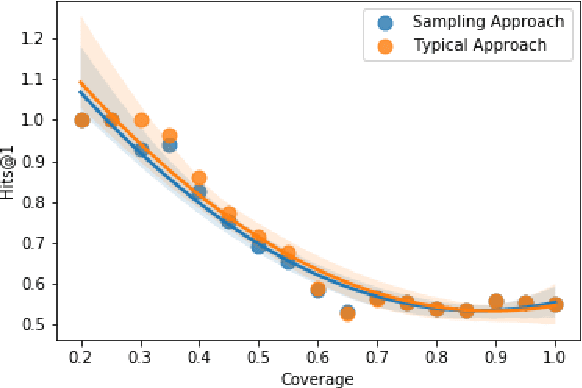
Abstract:Recent advances in Neural Variational Inference allowed for a renaissance in latent variable models in a variety of domains involving high-dimensional data. While traditional variational methods derive an analytical approximation for the intractable distribution over the latent variables, here we construct an inference network conditioned on the symbolic representation of entities and relation types in the Knowledge Graph, to provide the variational distributions. The new framework results in a highly-scalable method. Under a Bernoulli sampling framework, we provide an alternative justification for commonly used techniques in large-scale stochastic variational inference, which drastically reduce training time at a cost of an additional approximation to the variational lower bound. We introduce two models from this highly scalable probabilistic framework, namely the Latent Information and Latent Fact models, for reasoning over knowledge graph-based representations. Our Latent Information and Latent Fact models improve upon baseline performance under certain conditions. We use the learnt embedding variance to estimate predictive uncertainty during link prediction, and discuss the quality of these learnt uncertainty estimates. Our source code and datasets are publicly available online at https://github.com/alexanderimanicowenrivers/Neural-Variational-Knowledge-Graphs.
 Add to Chrome
Add to Chrome Add to Firefox
Add to Firefox Add to Edge
Add to Edge